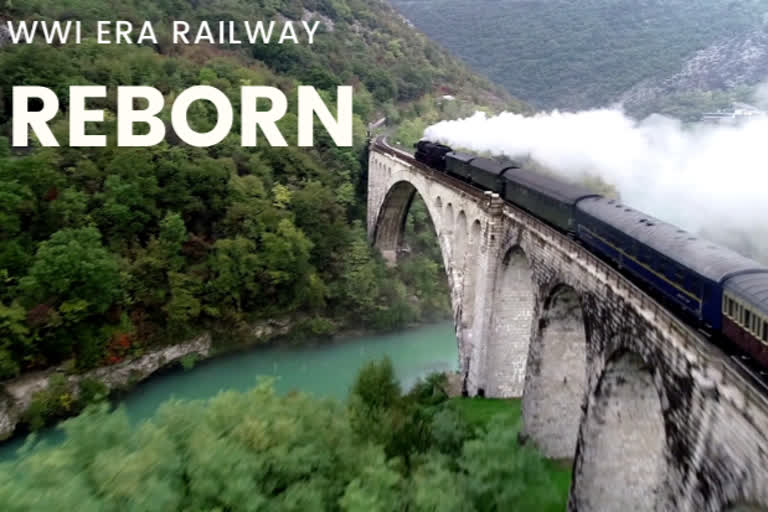Solkan:At a time when bullet trains have become synonymous with modernity, a stunning, winding railway, linking northern Slovenia with the Adriatic Sea has been reborn as a popular tourist experience for visitors from Europe, Asia and beyond. Chugging through the picturesque hills of western Slovenia, the Bohinj Railway born again last month.
The Bohinj Railway was constructed by the Austro-Hungarian Empire in the early 20th century. Its importance faded after the First World War.
It was built by the Austro-Hungarian Empire from 1900 to 1906 as part of a new strategic railway.
The aim was to connect western Austria and southern Germany with the then Austro-Hungarian port of Trieste.
The line starts in Jesenice, at the southern end of the Karawanks Tunnel.
It then crosses Slovenia's Julian Alps -- a mountain range -- through the Bohinj Tunnel, and passes the border town of Nova Gorica, before crossing the Italian border and reaching Trieste.
During the First World War, the railway carried the majority of Austrian military supplies to the Isonzo Front, the battleground for Austro-Hungarian and Italian armies.
With the dissolution of Austria-Hungary in 1918 and the isolation of communist Yugoslavia after 1945, the railway decreased in importance throughout the 20th century.
But, with Slovenia's accession to the European Union in 2004, the railway discovered a new purpose, as a convenient passenger and freight route from Central and Eastern Europe to the Italian port of Trieste.
Read also: Indian Railways conduct trial run in Kashmir ahead of resuming services
